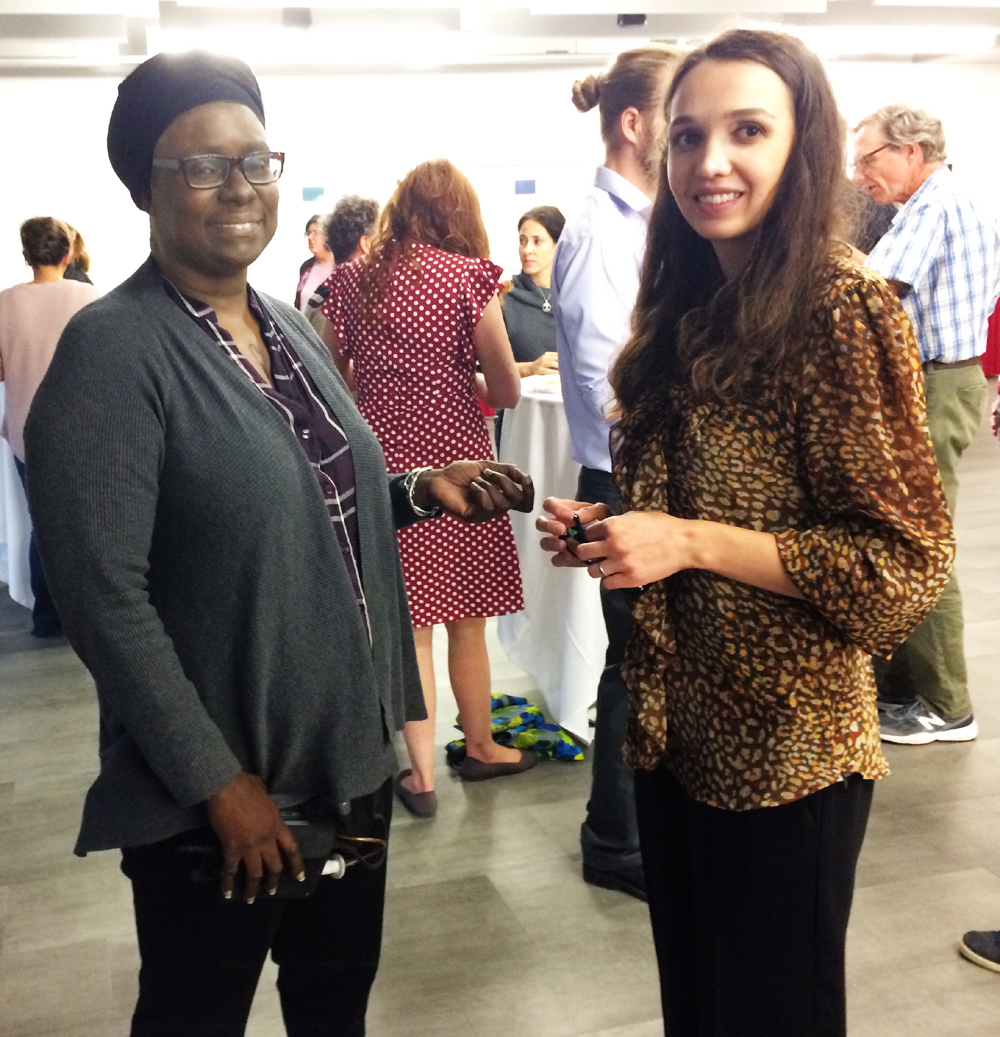
Spencer Cortwright is the reason the levee is a nature preserve
In business and biology, work is love made visible
Contributed By:The 411 News
IU Northwest spreads the word about professors’ research
Spreading the word about the research of its faculty is how IU Northwest is helping to celebrate the 200th anniversary of the university. The campus recently showcased 10 faculty members whose work is leading student learning and impacting communities in Gary and across northwest Indiana.
From community theatre to mass incarceration, education, germs, fake news, and even cannabis, professors shared how their areas of study are helping to shape the worlds of today and tomorrow.
The research of two professors, Spencer Cortwright and Yllka Azemi, demonstrated collaborations with communities in Gary.
Cortwright’s topic was “The Gem of Northwest Indiana: Restoration of the greatest ecological region in the U.S.”
Spencer is a biology professor who shifted from medicine to the natural world.
Interstate 80/94 and the Little Calumet River divide north and south Gary. Man made, the highway has been there since the 1960s. The river, well, thousands of years.
His domain is the levee, built after the rains of 2008 caused the Little Calumet to flood, inundating the highway, and homes and businesses in communities along the river were left underwater. IUN lost Tamarack Hall, the first building constructed on its campus.
Spencer is the reason the levee protecting the campus from river flooding is a nature preserve. Spencer said, “We live in an area that was once the most biological diverse in the country. And the Little Calumet River Prairie and Wetlands Nature Preserve and a few more preserves like it in northwest Indiana and northeastern Illinois are all that remain of that diversity.”
Nowhere else in the country, Spencer says, are there sand dunes, wetlands, prairie grasses, and forests sharing soils.
The Gary Parks Department gave him permission to work on the levee that borders the university.
Almost single handedly with help from the university to transport tools, plantings, and seeds to the levee, Spencer’s work of ecological restoration began.
He removed trash and brush; replaced invasive plant species with native plants. Those invasive species can change the food chain in a habitat by replacing food sources that native insects and small wildlife depend on for survival. Cortwright said native butterflies will not lay their larvae on invasive plant species.
His work is now a part of IU Northwest’s curriculum, training students to restore ecosystems. During spring and summer, views from the walking path atop the levee and from Broadway are of grasses and wildflowers. Cortwright said he has spotted sandhill cranes with their young in the wetlands.
“How Gary Businesses Can Attract Lifelong Customers” was the topic of Economics and Marketing assistant professor Yllka Azemi.
Azemi has studied what businesses promise to deliver and what customers expect. With a show of hands, almost everyone in the IUN auditorium answered yes to her question “How many of you have purchased a product or service and said I’ll never go back to that company again?”
Only half of marketing strategies are effective, Azemi said, with much of the $75 billion spent on marketing going to address customer dissatisfactions.
In a workshop developed for small Gary business owners, Azemi taught 54 marketing strategies. There were strategies to attract customers, “based on product, promotions, price, and place” along with strategies to make a customer happy if they were dissatisfied with a product or service.
From the first stage of data collection, came 3 findings.
Some companies struggled to use the strategies to bring customers in.
In stores where customers came in, there were incidents where the companies failed to satisfy customers who had complaints.
A strategy that satisfied one customer did not work for another.
The next stage of data collection revealed two types of shoppers were attracted to the businesses in Gary. The first customer type was “really passionate” to support Gary businesses; and the second type, who focused on price.
There were strategies that fit both types of customers, Azemi said, but “I hadn’t made recommendations that would make them loyal customers.” The type of loyal customers she wanted to build were those who had been dissatisfied and the business would be able to make them happy.
Azemi came up with six subgroups for the dissatisfied customers, from high to low, and developed strategies for each.
With this info, a platform was created for the businesses to work with all types of customers. It follows up with the customers to insure the relationship is intact and includes promotional strategies for further communications.
Azemi said the platform will be turned into a software application.
“I think of the words of Kahlil Gibran, ‘Work is love made visible,’ with this project,” Azemi said. “The reason is – I really loved working with the businesses of Gary and I think it will work with businesses across northwest Indiana.”

Andrea Griffin, left, professor in the School of Business and Economics and assistant professor Yllka Azemi
Story Posted:10/25/2019
|